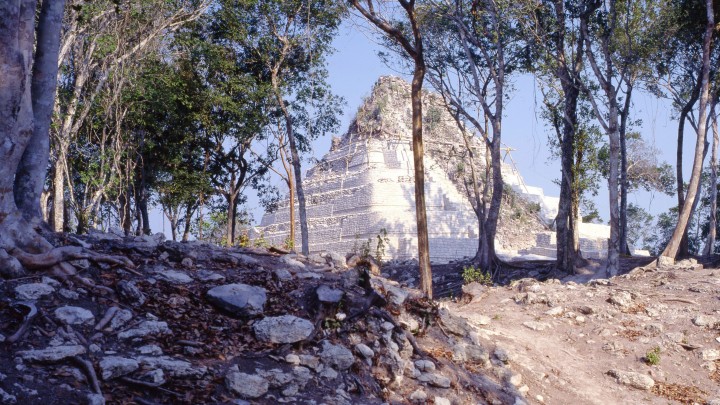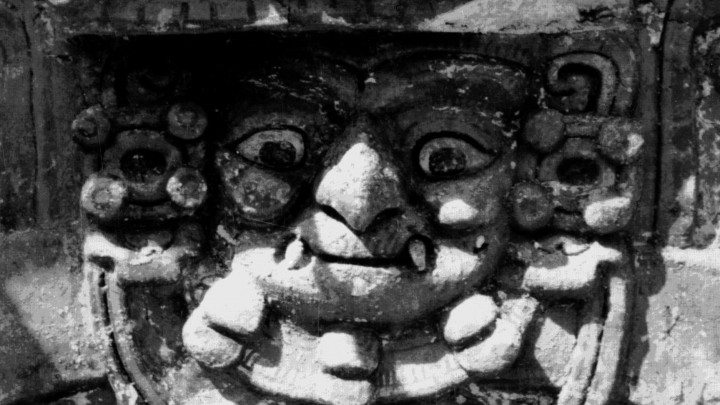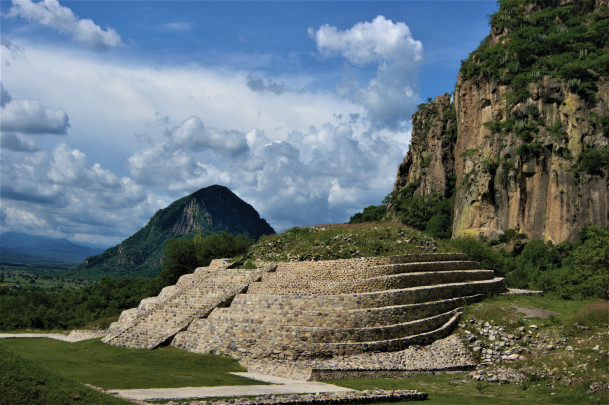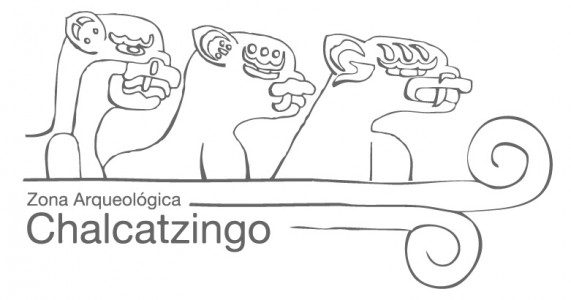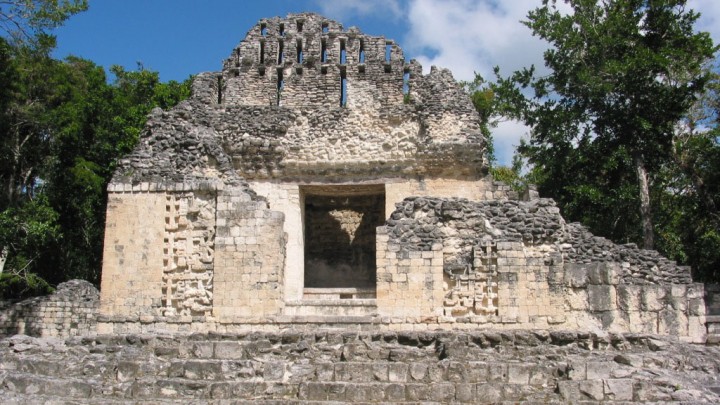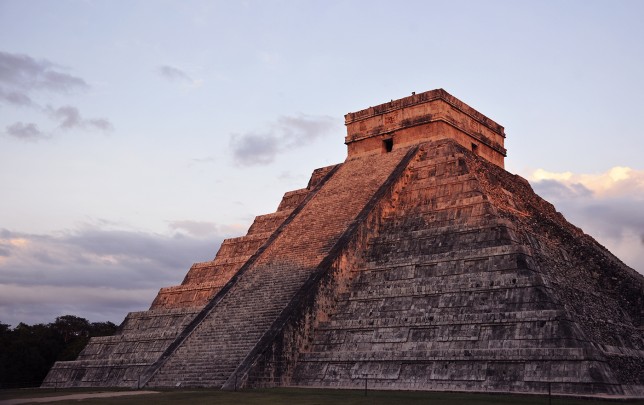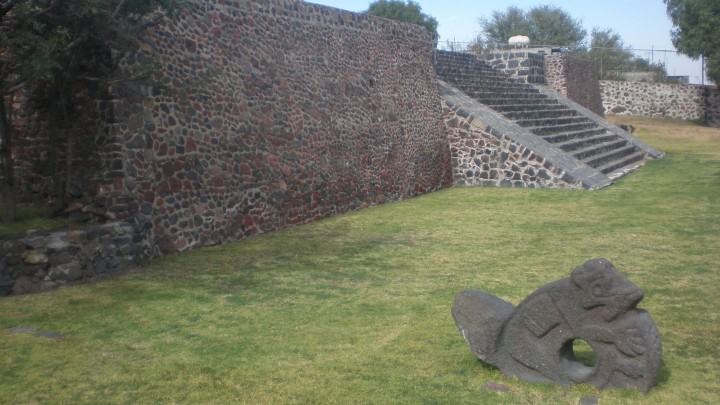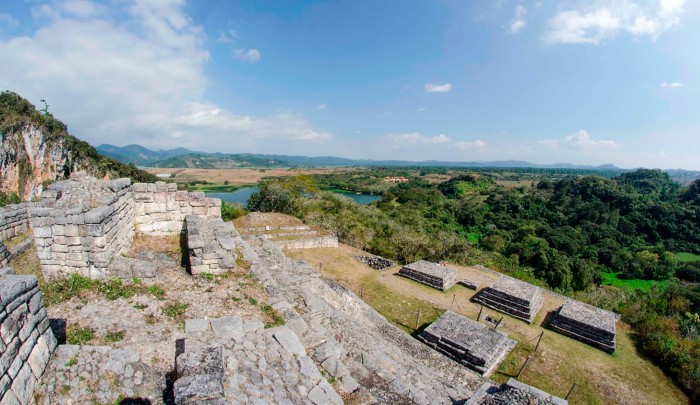189 Sites
The most notable Maya city in the lake zone of present-day Quintana Roo. The early settlements of 300 AD gave way to imposing constructions visible to this day, indicating a second occupation, in the 17th century. A great number of ‘portrait’ incense burners were salvaged from the peak.
Quintana Roo
In Chacmultún, the stone slabs contain microorganisms, which when exposed to air and water acquire a reddish hue. This colors the Mayan temples, built in the exquisite Puuc style and carved like filigree. The site flourished between 800 and 1000 AD and was a crucial link between neighboring cities.
Yucatán
A large and prosperous Maya city inhabited from 300 BC, with imposing plazas and monuments, one of which displays stucco facade masks of a god in the shape of a jaguar, plus some surprising sculptures reminiscent of the Olmecs.
Quintana Roo
An imposing city with a long history before our era, it rises from the Altiplano (high plateau), with outstanding reliefs, clearly influenced by the Olmecs from the distant Gulf coast. The buildings display a strength that has outlived the centuries.
Morelos
In the remote past this was an agricultural village on the banks of the river Grijalva and it became the most important ceremonial center of the Mixe-Zoque people. Its terraces, plazas and constructions, as well as the multitude of tombs with offerings and the ornamentation of the temples decorated with fine limestone, show its importance.
Chiapas
The masks of Itzamná, the god of the sun and wisdom represented by a face with enormous open jaws and bejewelled ears, appear especially grandiose, in this small ancient city where the ruling class once lived, situated on the route between the Gulf of Mexico and the coast of Quintana Roo.
Campeche
At the time of the equinoxes, the shadow of Kukulkan, the serpent, descends from its temple to fertilize the earth, while the red jaguar is hidden in the Temple of the Warriors, with its jade spots glowing. This ancient capital city has been declared a World Heritage Site.
Yucatán
Seven and a half centuries ago, three Chichimeca lords arrived in Chimalhuacán (abandoned since the fall of Tula), and re-founded a city which became a great Acolhua capital. As a testimony they left the Tecpan, the superb palace of their Tlatoani (chief), and a great number of excellent sculptures, which was their main activity.
Estado de México
The great city of the lakes of the ancient Maya, near the Guatemala border, with buildings cleverly adapted to the irregular shape of the hills. It has a very large ballcourt and the Plataforma de las Lajas (Platform of the Stone Slabs) was built from the largest cut stones in the whole of Mesoamerica.
Chiapas

